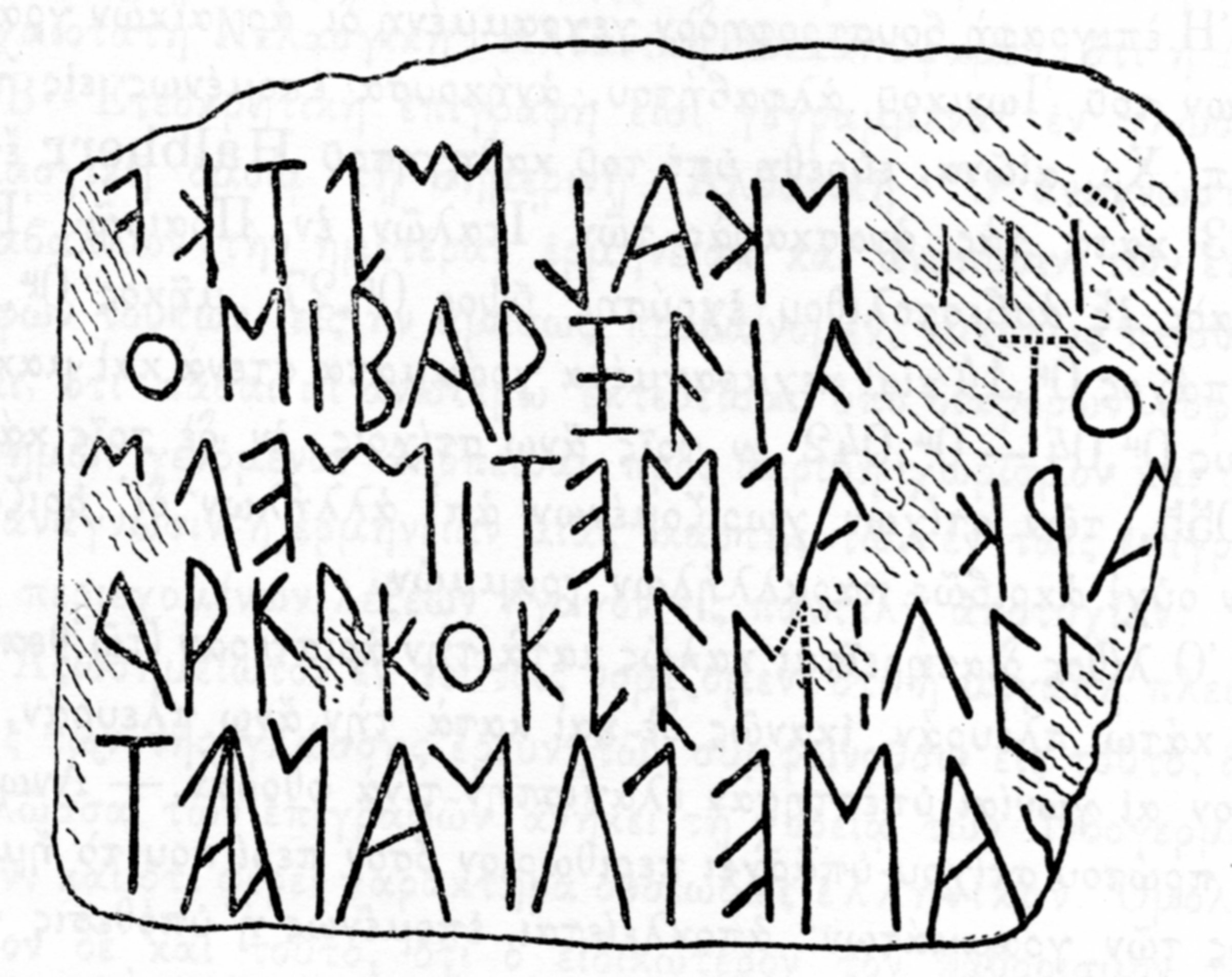HOME ECONOMICS
Τhe maiden is trading. I earn money trading the products of my land.
The inscription was found by the researcher Halbherr in 1893, during excavations in Praisos, Crete, Greece. It dates back to 600 B.C..
This is the inscribed stone, as it is depicted in the book Pelasgika (Πελασγικά), written by Iakovos Thomopoulos.
This is the text, inscribed on the stone, as it has been identified and clearly written.

This is an accurate copy of the inscription, taken from page 64 of the book Pelasgika (Πελασγικά), written by Iakovos Thomopoulos.
In the text we can find home economics dealing.
The text is a document of dietary knowledge, as well as the home economics trading activity, developed by a young woman.
Comparetti, Evans, Conway, Dowkins, Halbherr , as well as the Greek Iakovos Thomopoulos, worked on the inscription in question.
We studied the phonetic values in the actual text. We understood it, we read and rendered it into Modern Greek, but we also approached it philosophically.
Figuration of the phonetic values of the text.
In our own view, the phonetic values are formed as follows:
(ΗΛΟ)Ν ΚΑΛΜ ΤΣΤ ΚΕΟΜ Ι ΒΑΡΞΕΙΑ (Β)ΙΟ ΑΡΚ ΑΛΜΕΤΙ ΜΕΛ ΣΑΡΚΑ ΚΟΚΛΕ ΜΙΛΕΛΑΜΕΛΑΝ ΑΝΤΣΙΑΤ
The language of the text is Greek, Archaic, typical of any Proto-Greek text, with a boustrophedon writing system. The grammatical structure of the text is mixed.
One can identify Pontic words, as well as Classical Greek Language.
The utterance of the words and of the verbal types, follows the grammatical rules of the Pontic Dialect, as well as those of the Classical Greek Language.
Rendition of the text:
(ΗΛΟ)Ν ΚΑΛΜΑΝΙΟΥΤΟΝ ΤΣΙΤΑΝ ΚΑΙΟΜΕΝΗ ΙΣΤΑΤΟ ΒΑΡΞΕΙΑ ΒΙΟΝ ΑΡΚΕΤΟΝ ΑΛΜΕΤΕΙΜΕΛ ΣΑΡΚΑ ΚΟΧΛΕ ΜΙΛΕΑΓΜΕΝΟΝ ΑΜΕΛΑΝΟΝ ΑΝΤΣΕΙΑΤ
The Τext in Modern Greek:
The maiden was standing under the sun, and she felt tired and sunburnt. She earns a lot. Honey, white snails of good quality, freshly gathered.
(Στον ήλιο κουραζόταν λιγάκι, ηλιοκαιόμενη, στεκάμενη, η παρθένος. Βιός αρκετό κερδίζει. Μέλι,σάρκα κοχλιών διαλεγμένη αμέλανη, που μόλις υπάρχει και τη μάζεψε (φρεσκομαζεμένη).).
A Philosophical Approach:
The text narrates a maiden’s trade activity.
She collects honey from the hives and snails from the fields, choosing the biggest ones.
The snails have a white flesh.
She probably knows the winkles, as they have got ink.
She sells things under the sun and she becomes sunburnt.
The conclusions we draw after reading the text are the following:
People gather rare foods, which they buy and sell.
They know about the nutritional value of honey.
The snails are a kind of food, mostly preferred by people to cure their sensitive stomachs.
The most important conclusion one can draw, is that people start working from their young age.
The young maiden of the text is unmarried, with no engagements, however, she works to support her family financially.
